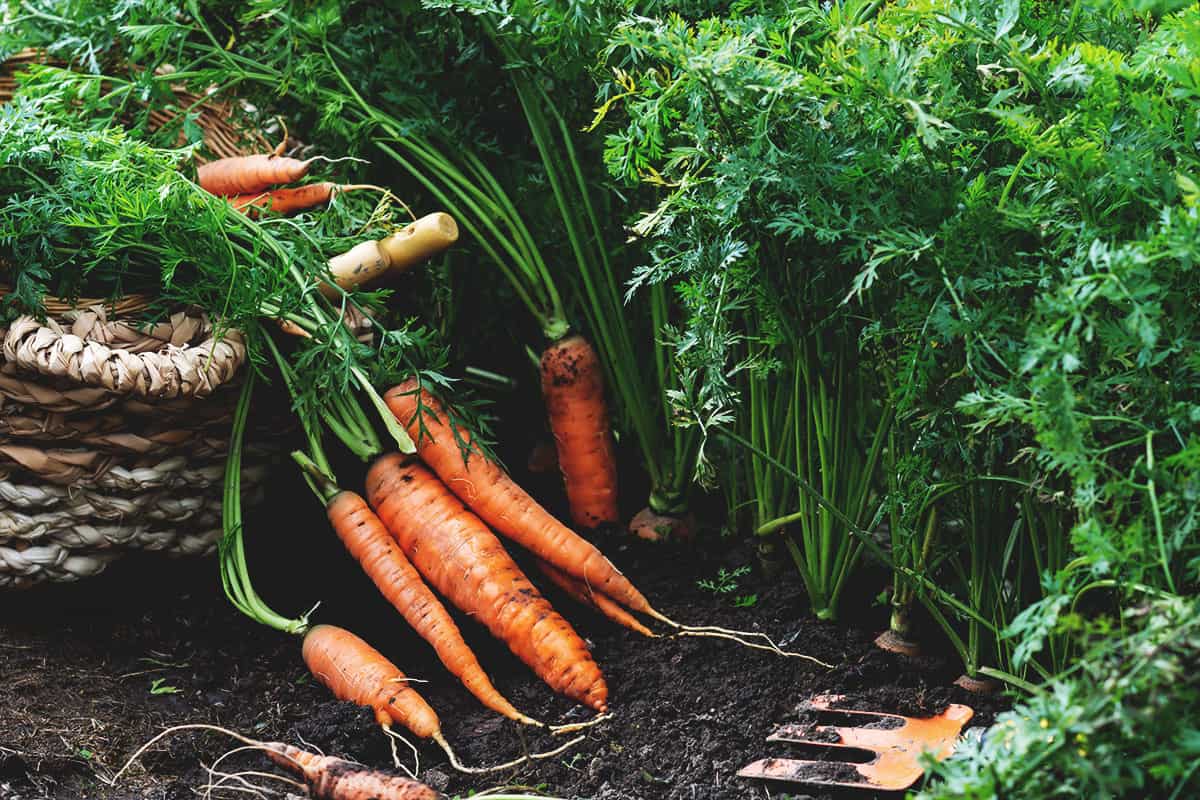We may earn a commission if you buy an item via one of the links on this page. Commissions have no bearing on our editorial content. Read the whole disclosure, including the details.
Carrots that have been grown in your own garden are far superior to those from the supermarket. Consider companion planting with carrots if you want the best crop you’ve ever had. Others help repel insects, while others enhance the flavor of certain herbs, vegetables, and flowers.
Let’s be honest here. Carrots are a picky eater that takes up a lot of space in the garden. As a result, it’s worth doing anything that makes growing them easier.
Let’s talk about companion planting with carrots if you’re ready to start planting some carrots and want to maximize your yield.

Good Companion Plants to Grow With Carrots
First, let’s take a look at some veggies that pair well with carrots.
1. Tomatoes
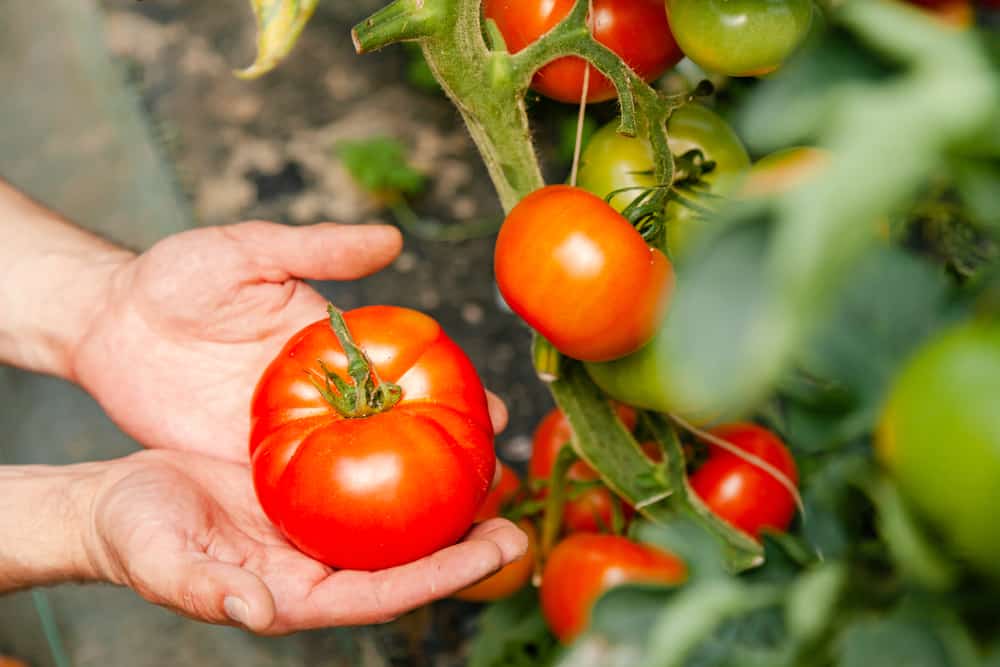
This is a tried-and-true pairing that offers a variety of benefits. Both of these plants work together, and they should be the first duo to consider.
Solanine is a chemical found in tomatoes that pests dislike. Carrots, on the other hand, attract a parasitic wasp that parasitizes tomato hornworms and caterpillars.
When you transplant tomato plants, direct sow carrot seeds. Plant the carrots near the edge of the garden and place tomato plants in the center of the garden bed. Tomatoes can provide some shelter for carrots while not entirely covering them in this position.
The carrots will need plenty of water if you want the tomatoes to survive.
2. Onions

Carrot flies may ravage a carrot field if not controlled. These pests are repelled by the sulfuric odor of onions.
When combining onions and carrots, timing is critical since they take longer to harvest. Two to three weeks after planting the onions, sow carrots. If you harvest the onions first, make sure the onions are at least 6 inches distant from the carrots.
While your carrots take a long time to grow, don’t disturb them by digging up your onions.
3. Bush Beans
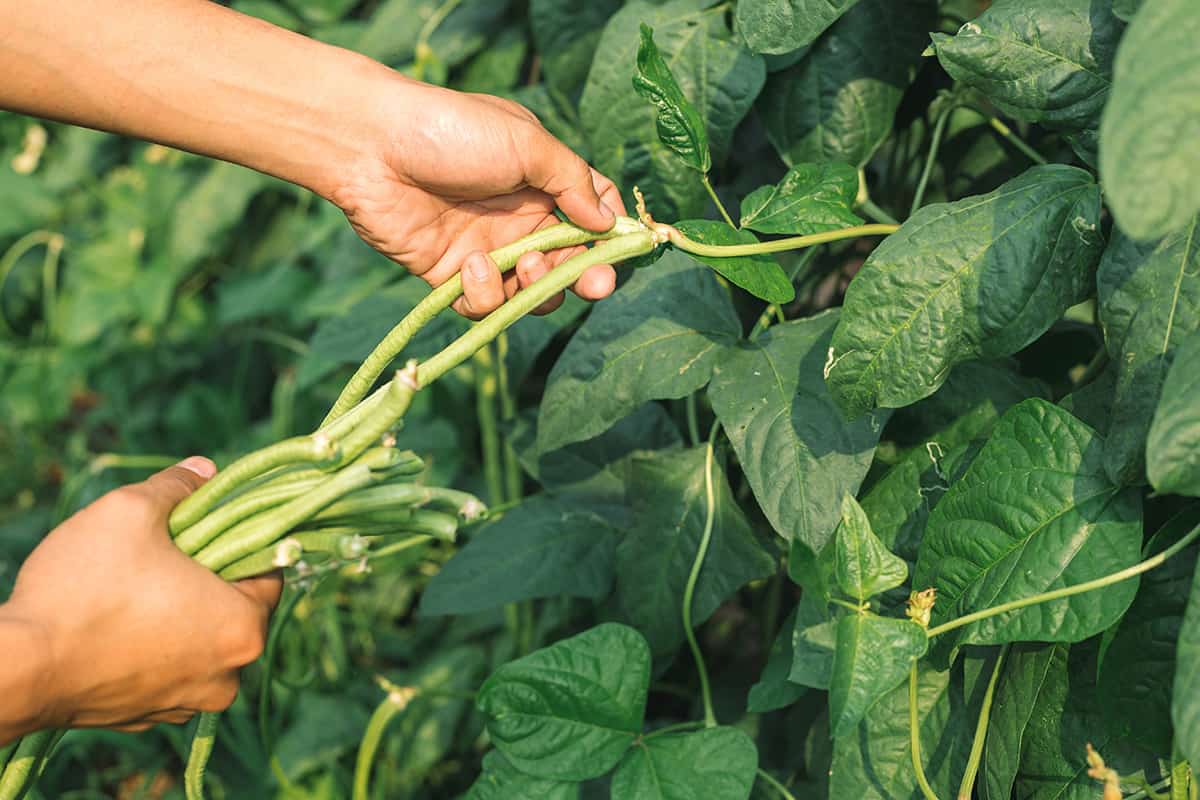
You’ll get cracked carrots if you apply fertilizer to the carrot patch that is too rich in nitrogen. Bush beans release nitrogen from their roots at a constant rate, which is what makes them so attractive.
Carrots should stay safer longer and produce more. Plant the carrot seeds and bush bean seeds at the same time when you plant them. Make sure that you take the sun into account when keeping the beans six inches from the carrots. The beans should not obstruct the sun from reaching the carrots.
4. Beets

Carrots benefit a little from beets, but not as much as beets benefit from them. In the world of companion planting, that’s a plus since they don’t have any negative consequences.
Carrots grow bigger because beets loosen the soil as they grow.
Be careful when growing beets and carrots at the same time since their green tops might encourage. They may grow to be quite large, shading the carrots.
You’ll have a happy team if you keep the beet and carrot rows at least 10 inches apart.
5. Turnips

Turnips were formerly seen as an outdated crop, but today’s sweet and flavorful versions are more popular. As compared to carrots, which may grow significantly deeper depending on the type, turnips are a shallow crop.
Some turnip greens, particularly certain aphid species, have a mustard scent that pests dislike.
At the same time as you sow carrots, try sowing Japanese-style turnips. When you harvest the carrots, you won’t bother them because the Japanese variety is typically smaller.
When planting turnips as companion plants, keep them at least six inches away from carrots.
6. Cabbage

Cabbage is a small brassica that can become quite spread out. To attract pests away from the carrots, I plant cabbage and sacrifice the outer cabbage leaves.
Cabbages don’t do carrots any harm and may endure their outer leaves being devoured more than carrots may.
Since certain cabbages can grow up to 18 inches across, give them plenty of room.
7. Leeks
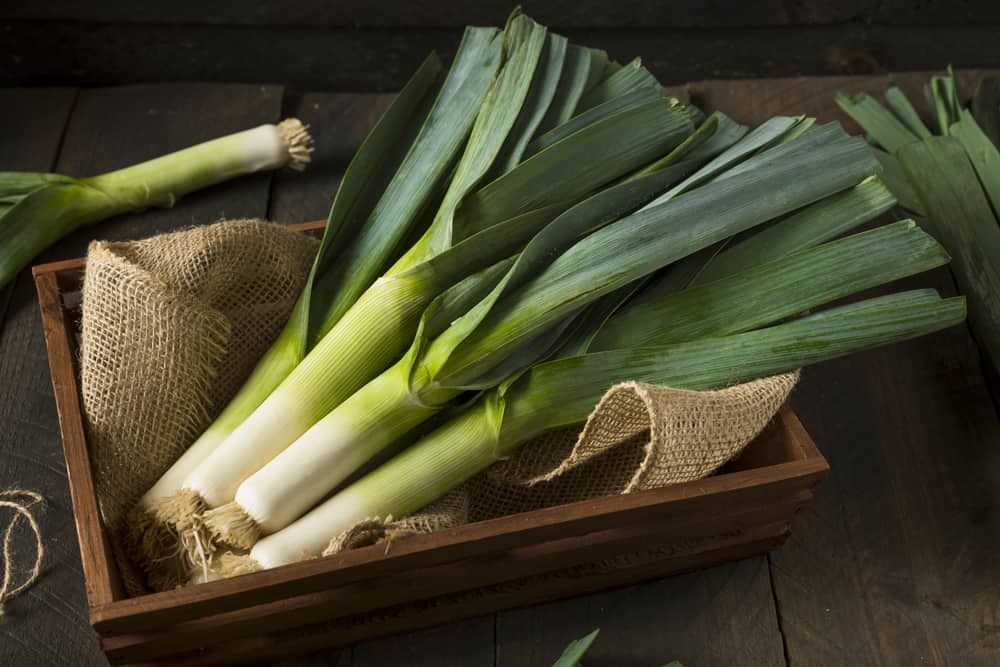
The odor that leeks give off helps to repel carrot flies, much like onions. Masking the carrot smell might also help to keep other pests at bay.
Carrot and leek planting requires timing. Leeks take up to 150 days to mature and are a long-season crop. If you have a selection that requires this long, you may mound your leeks and blanch them.
When you transplant the leeks, sow your carrot seeds. By following this approach, you’ll be able to harvest two carrots while the leeks continue to flourish.
Use the opportunity to mound up your leeks after you harvest your first carrot crop. After that, plant your second carrot crop.
When using leeks as companion plants, keep carrots at least 12 inches away from the root.
8. Lettuce

Lettuce does no harm, but it doesn’t provide any benefits to carrot crops. Lettuce is a tiny feeder that suits carrots well, and it takes up little space.
For this reason, you can plant carrots and lettuce close together at about four inches apart, especially if you have pic-and-come-again lettuce you regularly keep small.
Because you’ll need to harvest the lettuce before the carrots, give it a little more room when you plant one-crop iceberg lettuce.
9. Scallions

Carrots prefer scallions because they have shallow roots and minimal foliage. They grow quickly and are a fast-growing crop. Scallions, like other alliums, repel insects because of their smell. In the carrot garden, they also seek to maximize space.
Plant the scallions around the edge of the carrot bed to maximize their pest defense properties, leaving six inches between each row of carrots and scallions.
Herbs That Grow Well With Carrots
There are several ways to plant herbs as companion plants for carrots if you prefer to go that route
10. Oregano

Carvacrol and thymol are two essential oils found in oregano. Oregano deters nematodes and various fly species, which hate them.
When carrots are put in the same garden as oregano, many gardeners believe it improves their flavor. At harvest season, they really complement each other in the kitchen.
At the same time as carrots, direct sow oregano. Planting the carrots in rows is a good method, and placing oregano around each corner of the carrot patch is even better. The oregano and carrot they’re closest to should be at least 12 inches away.
11. Cilantro

Cilantro is an exception, despite the benefits it offers to carrot plants as they grow, because I wouldn’t recommend it for a companion plant with other Apiaceae (parsley family) plants.
The blossoms function as a forcefield for carrots if you let cilantro bolt to seed. Predators, including aphids, nematodes, and rust flies, are drawn to cilantro flowers.
Planting cilantro and carrots together as companion plants accommodates for their preferences for cooler weather.
12. Rosemary

Carrots should be kept at a safe distance from rosemary, a companion plant. It can become quite deep-rooted and grow to be enormous, shading anything around it.
Carrot pests are deterred by rosemary masks that disguise the odor.
In a garden adjacent to yours, or on the outskirts of your garden where you grow carrots, plant rosemary.
13. Sage

Both sage and carrots are beneficial to us. Cabbage moths and nematodes are repelled by sage. Treat it like rosemary and give the carrots plenty of space. It can grow large in some environments.
Sage, when grown in warmer climates, may be a excellent annual to remove back in the winter and replace in the spring.
Flowers That Grow Well With Carrots
When it comes to companion planting, most people think of veggies and herbs, but flowers are also important. If you have a carrot crop, consider adding flowers.
14. Marigolds
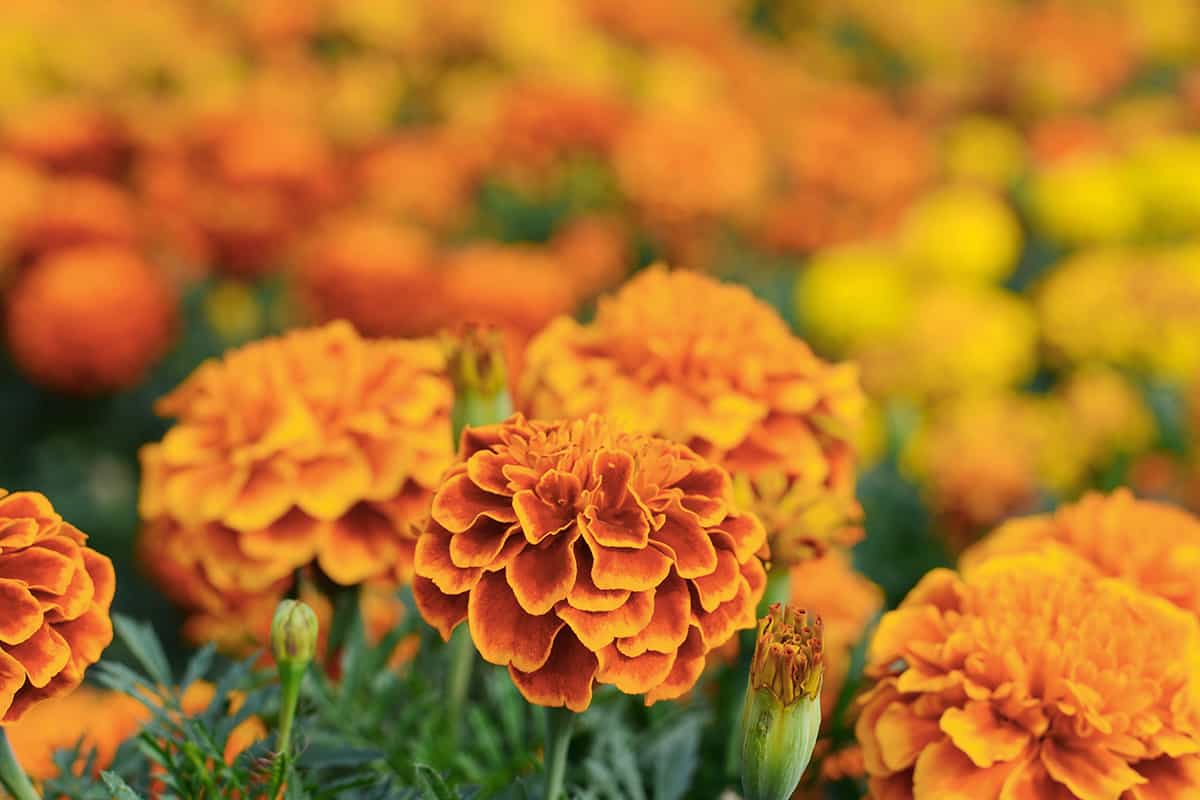
The star of companion planting is marigolds. Carrots are one of the few things they don’t like. Marigolds will discourage carrot rust flies and psyllids, as well as providing a burst of color in the carrots’ salads.
Plant marigolds before the carrot seeds, as they may take up to 100 days to mature. Wait until you know where you put them before you push them through the surface. Carrots should be planted at least 12 inches from the nearest marigold.
15. Daffodils

Daffodils, while not being the most common flower for carrots, are nevertheless very useful and lovely.
Deer, mice, and squirrels are all poisoned by daffodils. Rodents hate the taste and odor of the bulbs. As a result, it’s a smart idea to plant daffodils along your carrot garden’s edge to deter rodents from digging into it.
Plants to Avoid When Growing Carrots
Not all plants get along, so here’s what to avoid:
1. Fennel
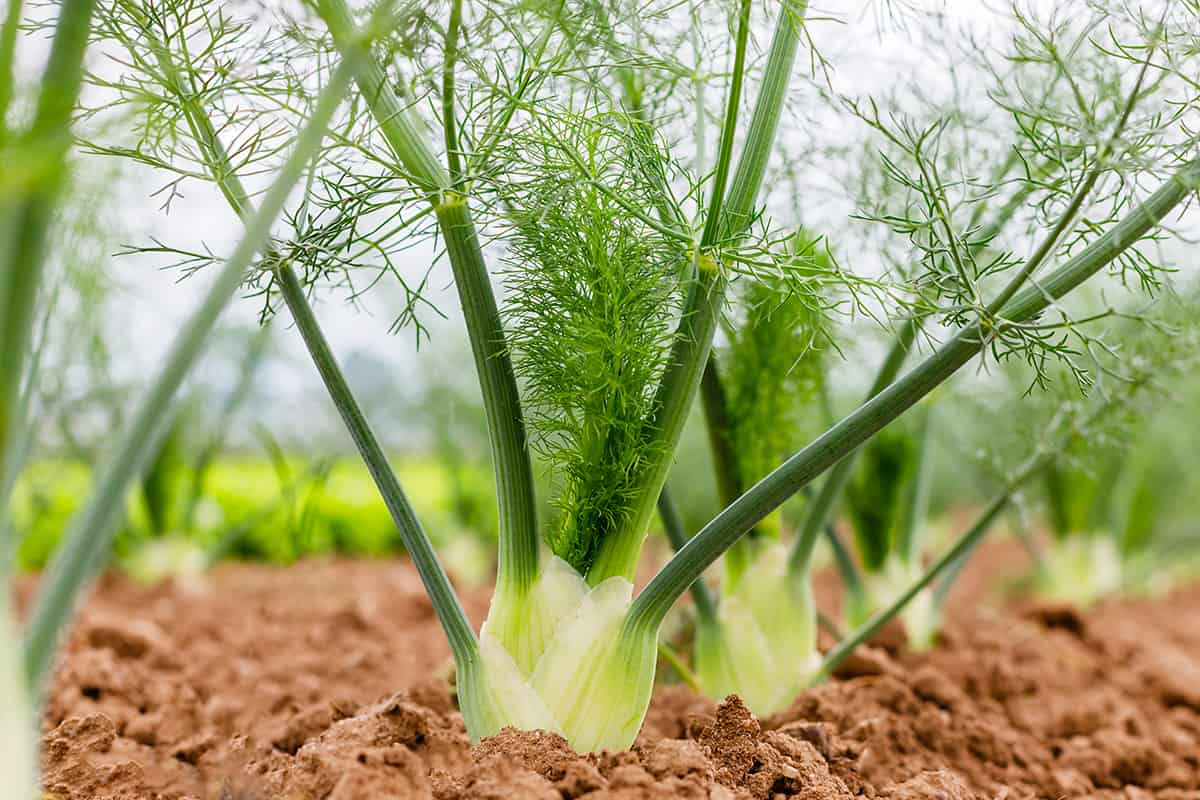
Carrots don’t like fennel, so don’t use it as a companion plant. It’s as yummy as fennel, but carrots don’t like it. Carrot growth is inhibited by chemicals produced by fennel in the soil. Fennel attracts a lot of bugs, so keeping it away from your carrots is recommended.
2. Parsnips

Parsnips attract the same insects and diseases as carrots do. They are from the same family. Planting them at a sufficient distance from each other is the best option.
3. Cucurbits
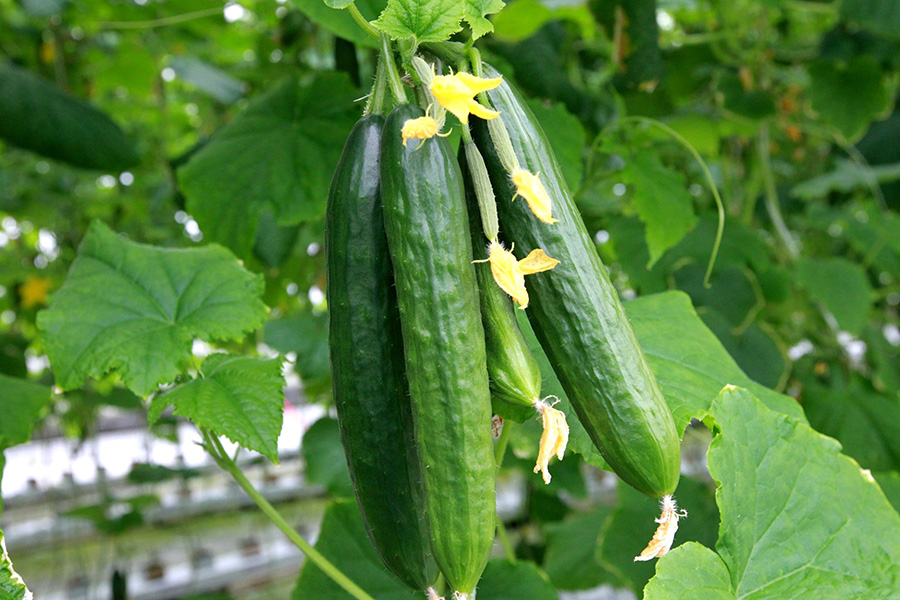
Pumpkins, cucumbers, squash, and watermelons are among the types of melons. These plants take up a lot of room, eat a lot, and will quickly smother carrots.
4. Dill

Dill and other carrot relatives are likely to attract the same pests and diseases, making them poor companions. It also produces a soil chemical that isn’t beneficial to carrots.
